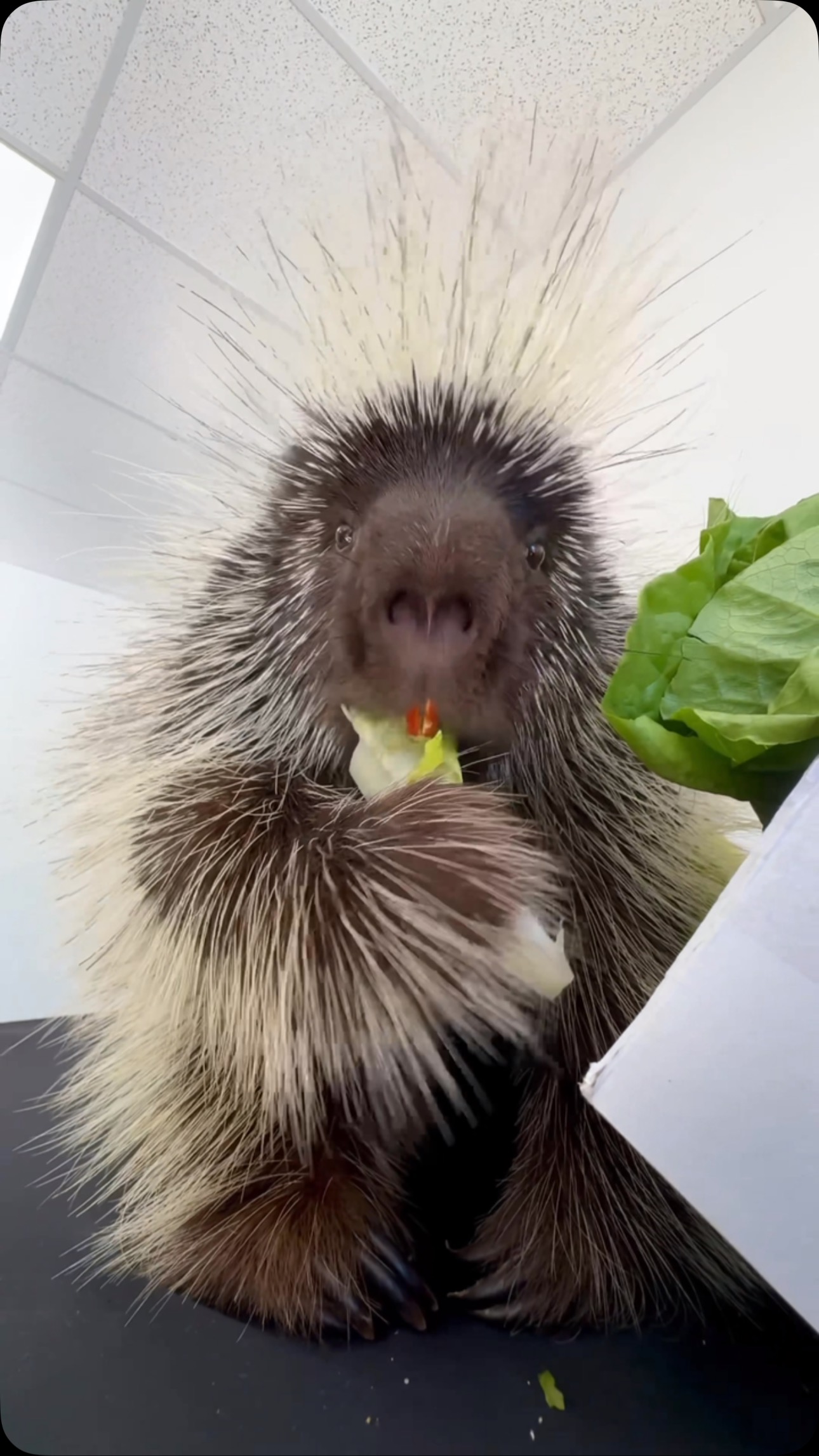- The natural habitat and dietary preferences of hedgehogs.
- The importance of diversified diets for captive animals.
- Zoo management practices for optimizing animal health and welfare.
- The role of social media in wildlife conservation awareness.
- The impact of leafy greens on the health of hedgehogs.
Hedgehogs are fascinating creatures, captivating the interest of many due to their unique characteristics and adaptive behaviors. Native to regions like Europe, Africa, and Asia, these small mammals are often found in farmland, forests, and suburban areas. Their natural habitat plays a crucial role in dictifying their dietary habits, which primarily consist of insects, worms, and various leafy greens like lettuce. Understanding these dietary preferences is essential for conservationists and zoo management professionals who aim to replicate natural conditions for hedgehogs in captivity.
Hedgehogs have an omnivorous diet, but in their natural habitats, they tend to favor certain food types based on availability and nutritional needs. Lettuce and other greens aren’t often their staple diet, yet they provide essential nutrients that contribute to their overall well-being. These leafy vegetables, rich in vitamins A and C, calcium, and fiber, support digestive health. For hedgehogs, this means an easier gut function and a more balanced diet when their insect intake might be low.
In zoo environments, maintaining the nutritional health of animals is paramount. Nutritionists and zookeepers need to ensure that hedgehogs, like Elmer, receive a balanced diet tailored to their typical intake in the wild. While hedgehogs enjoy the occasional treat of lettuce and greens, their diet in captivity has to be carefully curated. It’s crucial to provide a mix that offers protein from insects or specialized pellets, supplemented with fruits and vegetables, to mimic their natural diet as closely as possible. This approach not only promotes physical health but also enhances hedgehog behavior, allowing them to thrive in captivity.
Effective zoo management hinges on the health and welfare of the animals. Through careful monitoring and adjustment of diets, alongside environmental enrichment and social management, zoos can create sustainable environments that keep hedgehogs and other animals both physically and mentally stimulated. Such strategies are designed to replicate natural habitats, encourage natural behaviors, and provide opportunities for exercise and exploration.
In recent years, social media platforms have become valuable tools for spreading awareness about wildlife conservation. Engaging content, such as videos of hedgehogs enjoying their meals, has the power to inspire, educate, and mobilize the public. This ensures that the message of conservation reaches a broad audience, fostering a deeper appreciation for wild animals and the efforts made to protect them. By sharing clips of Elmer’s fondness for lettuce, zoos and conservationists can connect with people across the globe, encouraging support for conservation programs and habitat protection initiatives.
The nutritional benefits of leafy greens like lettuce extend beyond fiber and vitamins. These greens provide crucial hydration due to their high water content, which is beneficial for hedgehogs, as it supports their overall hydration status and aids in bodily functions. However, these greens should be offered in moderation, as excessive intake may lead to digestive issues. This highlights the importance of balanced meal planning in captive settings.
Overall, understanding the dietary needs and natural preferences of hedgehogs like Elmer plays a key role in their management and conservation. By using an intricate blend of nutrition, environmental caretaking, and public engagement, zoos can significantly contribute to the wildlife conservation cause. The harmonious relationship between academic research, practical zoo management, and digital outreach efforts underscores the multifaceted approach required to preserve these fascinating creatures for future generations. Elmer’s enjoyment of lettuce is just a small part of a much larger narrative about hedgehog care and conservation efforts, illustrating the importance of comprehensive dietary management and public education in this field.
*****
Source Description
Elmer loves his lettuce! 🥬🦔
.
.
.


